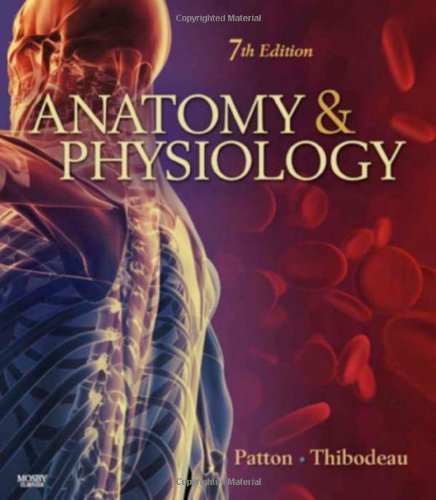In Stock
Test Bank For Anatomy And Physiology 7th Edition By Patton Thibodeau
Digital item No Waiting Time Instant DownloadISBN-10: 032305529X ISBN-13: 978-0323055291
Original price was: $55.00.$25.00Current price is: $25.00.
Test Bank For Anatomy And Physiology 7th Edition By Patton Thibodeau
Patton and Thibodeau: Anatomy & Physiology, 7th Edition
Chapter 2: The Chemical Basis of Life
Test Bank
TRUE/FALSE
1. Biochemistry deals with the chemical makeup of living organisms and the underlying process of life activities.
ANS: T DIF: Memorization REF: Page 34
TOP: Introduction
2.The number of protons in the nucleus of an atom determines its atomic mass.
ANS: F DIF: Memorization REF: Page 36
TOP:Atomic Number and Atomic Weight
3.The positively charged electrons are found in clouds outside the nucleus of an atom.
ANS: F DIF: Memorization REF: Page 36
TOP:Atomic Structure
4.Two shared pairs of electrons represent a single covalent bond.
ANS: F DIF: Application REF: Page 39 TOP: Covalent Bonds
5.The digestion of food is an example of a decomposition reaction.
ANS:TDIF:ApplicationREF:Page 40
TOP:Chemical Reactions
6.The number and arrangement of electrons orbiting in an atom’s outer shell determine its chemical activity.
ANS: T DIF: Application REF: Page 37 TOP: Energy Levels
7.An atom is chemically inert if its outermost shell has two pairs of electrons.
ANS: F DIF: Application REF: Page 37 TOP: Energy Levels
8.An isotope of an element contains the same number of neutrons but different numbers of protons.
ANS: F DIF: Memorization REF: Page 37
TOP: Isotopes
9.Electrovalent and ionic bonds are the same.
ANS: T DIF: Memorization REF: Page 38
TOP: Ionic Bonds
10.Radiation results from the breaking apart of the nucleus of an atom.
ANS: T DIF: Memorization REF: Page 38
TOP:Radioactivity
11.Radioactivity can cause an atom of one element to change to that of another element.
ANS: T DIF: Memorization REF: Page 38
TOP:Radioactivity
12.Ionizing radiation can be cancer-producing.
ANS: T DIF: Memorization REF: Page 38
TOP:Radioactivity
13.A substance that resists changes in pH when acids or bases are added is called a buffer.
ANS: T DIF: Application REF: Page 45 TOP: Buffers
14.The chemical reaction of an acid with a base always produces a salt and water.
ANS: T DIF: Application REF: Page 45 TOP: Salts
15.Water is the universal solvent.
ANS: T DIF: Memorization REF: Page 43
TOP: Water

Reviews
There are no reviews yet.